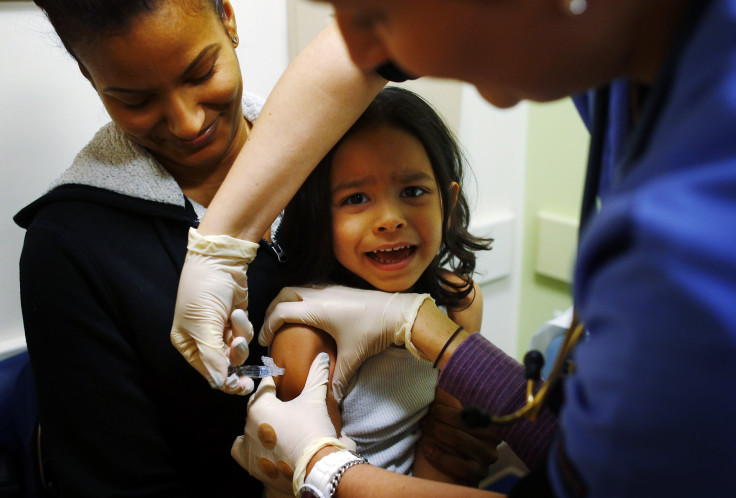2014-2015 Flu Season Declared An Epidemic Due To Mutating H3N2 Virus, Ineffective Vaccines

With 15 deaths and 36 states reporting widespread activity of the virus, the flu has officially reached epidemic levels in the United States. The Centers for Disease Control and Prevention announced Tuesday that this year's flu season was on track to be severe. Although the U.S. always sees epidemic levels of the flu, experts warned that this year's situation could worsen as the winter continues. “We’re already above the peak that we saw last year, and we’re increasing,” CDC medical officer Dr. Michael Jhung told the New York Times.
The spread could be due in part to the strain of the influenza virus circulating this year: H3N2. Not only does H3N2 typically lead to more hospitalizations and deaths but also flu shots don't fully protect against it. Even though H3N2 was included in flu shots' makeup this year, the virus began mutating in March. The vaccine lost some of its efficacy as a result, the Wall Street Journal reported.
"We could see a lot more illness because we have a lot less people who are immune," Trish Perl, of the Johns Hopkins Medicine Department of Hospital Epidemiology and Infection Control, told the Washington Post.
H3N2 has a reputation for being particularly deadly. Fifteen people under the age of 18 have died from the flu so far this year. Typically, flu-related death tolls for kids are between 35 and 171, the Washington Post reported.
In order to be declared an epidemic, the flu and pneumonia have to cause 6.8 percent of all deaths in a week under the CDC's 122 Cities Mortality Reporting System. This occurred during the week of Dec. 14-Dec. 20. H3N2 was also doubling the hospitalization rate. About 9.7 people per 100,000 had been hospitalized with flu-related symptoms this year so far. Last year, the rate was 4.3.
How do you know if you have the virus? According to the CDC, here are the usual flu symptoms:
- fever/chills;
- sore throat;
- runny nose;
- aching body.
And here's what to do if you get sick:
- stay home;
- avoid other people;
- only go to the hospital if you can't breathe, have sudden dizziness, keep throwing up or have pain in your chest.
© Copyright IBTimes 2025. All rights reserved.






















